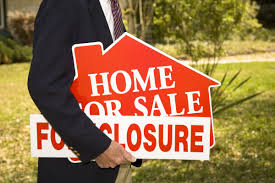 Going through a foreclosure can be devastating, and many communities still haven’t recovered emotionally or financially from the years of unusually high numbers of foreclosures following the financial crash of 2008.
Going through a foreclosure can be devastating, and many communities still haven’t recovered emotionally or financially from the years of unusually high numbers of foreclosures following the financial crash of 2008.
If you’re concerned with the state of the economy and how it could impact your wealth, here are five things you should do before a recession.
The great news is that foreclosure rates in the United States have been steadily declining since 2011. The bad news is that after the pandemic-related foreclosure moratorium ended on July 31, 2021, the rate of foreclosures has been rising steadily month-over-month.
What causes foreclosure?
Causes of foreclosure include things that reduce income or increase mandatory expenses for three months in a row, so the homeowner can’t make their mortgage payment for three months.
Those reasons include sudden medical expenses, divorce or death of one adult in the home who earned a wage, credit card debt or other debt, a large unexpected expense such as a new roof or tax bill, a natural disaster that damages the home or causes income loss, or job loss.
Two new factors in the last two years that can affect the ability to pay mortgage loans are COVID-19-related. Hospitalizations from COVID-19 and the effects of long COVID can reduce income and increase expenses enough to push a homeowner into foreclosure.
Sometimes a homeowner will move to another house and instead of selling the house, will simply stop paying the mortgage and allow the property to be foreclosed on. Foreclosure negatively impacts your credit and can counter any efforts you’ve taken to boost your credit.
Job market affects foreclosures
While job loss is a top reason for foreclosures, official unemployment rates by state from the Bureau of Labor Statistics don’t correlate highly with the foreclosure rates currently. Since current official employment rates are so high in the United States, it is reasonable to assume that underemployment is a greater cause of foreclosures than full unemployment is in this specific economy.
The labor market has gone through massive changes during the pandemic, and one of those is people leaving the labor market voluntarily or working on a casual or part-time basis by choice. People choosing not to look for jobs or to be underemployed are at higher risk of foreclosure than are fully employed people, and they are also not reflected in unemployment figures.
Another labor-related cause of foreclosures that isn’t reflected in unemployment numbers is the effect that holding back the minimum wage artificially has had on the labor market and on home-buying behavior.
Without cost-of-living (COL) increases in the minimum wage and the corresponding COL increases in higher-waged jobs, buyers are less likely to have a down payment saved before buying a house, so they are more likely to enter into larger and riskier mortgage contracts at higher interest rates. This increases the precarity of the market and the mortgage default rate, which leads to foreclosures.
Based on data from ATTOM, these are the 10 states with the highest rates of foreclosures from the first three months of 2022.
10. Georgia
One of every 1,702 housing units was foreclosed on in Georgia in the first quarter of 2022, or 0.06%. That’s 2,592 units foreclosed on.
9. Michigan
One of every 1,426 housing units was foreclosed on in Michigan in the first quarter of 2022, or 0.07%. That’s 3,205 units foreclosed on.
8. Florida
One of every 1,211 housing units was foreclosed on in Florida in the first quarter of 2022, or 0.08%. That’s 8,147 units foreclosed on.
7. Indiana
One of every 1,210 housing units was foreclosed on in Indiana in the first quarter of 2022, or 0.08%. That’s 2,415 units foreclosed on.
6. Delaware
One of every 1,163 housing units was foreclosed on in Delaware in the first quarter of 2022, or 0.09%. That’s 386 units foreclosed on.
5. Nevada
One out of every 1,090 housing units was foreclosed on in Nevada in the first quarter of 2022, or 0.09%. That’s 1,175 units foreclosed on.
4. South Carolina
One out of every 1,081 housing units was foreclosed on in South Carolina in the first quarter of 2022, or 0.09%. That’s 2,170 units foreclosed on.
3. Ohio
One out of every 991 housing units was foreclosed on in Ohio in the first quarter of 2022. That’s 0.1%, a total of 5,289 units
2. New Jersey
One out of every 792 housing units was foreclosed on in New Jersey in the first quarter of 2022. That’s 0.13% of all properties, a total of 4,752 units.
1. Illinois
One out of every 791 housing units was foreclosed on in Illinois in the first quarter of 2022. That’s 0.13% of all properties, a total of 6,861 properties foreclosed.
Read Full Article [Source: www.financebuzz.com]




